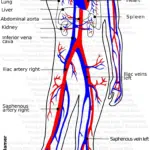
Since many organs often consist not only of tissue from one but from several cotyledons, a single organ often has different conflict content. Therefore the classification of medicine according to organs is outdated. More bio-logical would be the classification of medicine according to the cotyledons.

Organ Blood The blood and what can be deduced from the laboratory values.

Organ Blood Vessels The blood vessels are made of connective tissue but have striated and smooth muscle portions. They are NOT lined internally with squamous epithelium, such as the coronary vessels (gill duct derivatives). The arteries have to do with “not being able to walk,”
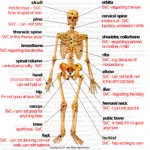
The organ bone always has a severe self-value collapse as its conflict content. Each bone and each joint has its own self-value content. With the SBS bone, the blood picture is also always changed.
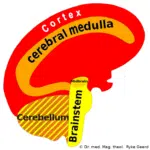
The organ brain is divided into the old brain and the new brain. The brainstem, midbrain, and cerebellum belong to the old brain. The cerebral medulla and cerebral cortex belong to the new brain. The brain controls the SBSe with its brain relays. In the
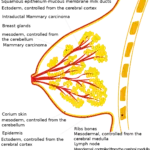
In the Organ Breast a distinction must be made between the mammary glands (care, dispute, nest conflict) and the mammary ducts (separation conflict). Typical subsequent conflicts are disfigurement due to the surgery (melanoma). And due to the diagnosis, self-value collapses at the breast’s level on
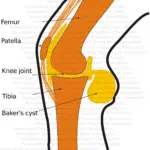
The Organ Cartilage has a slight self-value collapse as conflict content. Each joint has its own self-value content.

The Organ Connective Tissue is controlled from the cerebral medulla and is found as supporting tissue in all organs. Glia in the brain is a special connective tissue that occurs only directly on the nerves.
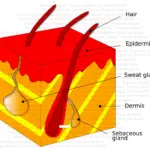
The Organ Dermis is gland-like tissue and is controlled by the cerebellum. Evolutionarily, the dermis dates back to when our ancestor (worm) left the sea and conquered the land. The dermis has a protective function. Its special programs always have to do with a violation
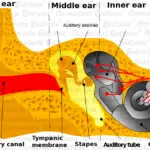
Organ Ear The middle ear is about the morsel of information you want to get (right) or get rid of (left). Since it is controlled from the brainstem, handedness has no role here. While in the case of hearing conflict (tinnitus, hearing loss, loss of
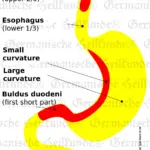
The lower third of the organ esophagus (brainstem) is about the morsel you can’t swallow. The upper ⅔ of the esophagus (cerebral cortex) is about the morsel you want to spit out. For the latter, handedness is crucial.
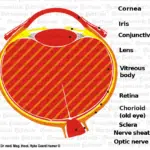
The organ eye is a complex organ and is composed of different germ layers. Accordingly, the eye has different SBSs.
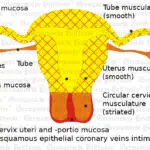
The organ Fallopian Tubes is about an ugly semi-genital conflict with a male person.
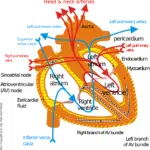
The organ heart has the atria (smooth muscle) and the ventricles (striated muscle). The coronary vessels are lined internally with squamous epithelium. The pericardium lines the heart.
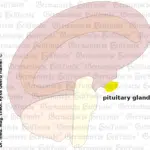
The organ hypophysis has two possibilities: I am not able to feed the family (elevated prolactin). One is too small for the morsel (acromegaly, short stature). The pituitary gland has the conflict content,”one is too small to get the good morsel, or to get
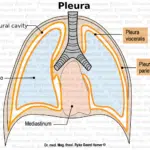
The inner skins include the peritoneum, pericardium, pleura, and pleura of the lungs. All of them are controlled from the cerebellum. This always involves attack conflicts.
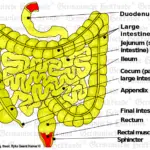
In the case of the organ intestine, the glandular tissue (intestinal villi, brainstem controlled) and the smooth muscle (midbrain) are present. Each intestinal section has its conflict content (morsel, anger). The beginning (first section of the duodenum) and the end (12cm up the rectum) is
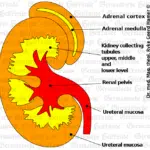
In the organ kidney, we have the kidney parenchyma (hypertension, renal cyst, Wilms), the kidney collecting tubes (water retention, dialysis, protein in urine), the adrenal cortex (cortisol), and the adrenal medulla (adrenaline).

The organ larynx and vocal cords are squamous and are controlled from the territorial area.
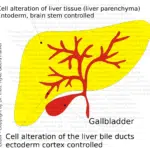
In the organ liver’s case, we have the liver parenchyma with liver cancer (starvation – brainstem). Many liver rounds mean starvation around itself, and a single liver round means starvation around someone else (or animal). On the other hand, the hepatic ducts are lined with
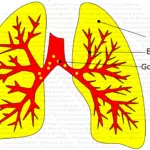
In the organ lungs, we have the pulmonary alveoli with the pulmonary round (fear of death). We have the bronchial mucosa with bronchitis and bronchial carcinoma (healing phase, fear of territory, fear of fright conflict). Then there are the mucus-secreting goblet cells (mucoviscidosis, fear of
TODAY: 13
LAST 30 DAYS: 3.238
THIS YEAR: 33.185
TOTAL: 152.300
| Cookie | Duration | Description |
|---|---|---|
| cookielawinfo-checkbox-analytics | 11 months | This cookie is set by GDPR Cookie Consent plugin. The cookie is used to store the user consent for the cookies in the category "Analytics". |
| cookielawinfo-checkbox-functional | 11 months | The cookie is set by GDPR cookie consent to record the user consent for the cookies in the category "Functional". |
| cookielawinfo-checkbox-necessary | 11 months | This cookie is set by GDPR Cookie Consent plugin. The cookies is used to store the user consent for the cookies in the category "Necessary". |
| cookielawinfo-checkbox-others | 11 months | This cookie is set by GDPR Cookie Consent plugin. The cookie is used to store the user consent for the cookies in the category "Other. |
| cookielawinfo-checkbox-performance | 11 months | This cookie is set by GDPR Cookie Consent plugin. The cookie is used to store the user consent for the cookies in the category "Performance". |
| viewed_cookie_policy | 11 months | The cookie is set by the GDPR Cookie Consent plugin and is used to store whether or not user has consented to the use of cookies. It does not store any personal data. |
You’ll be informed by email when we post new articles and novelties. In every email there is a link to modify or cancel your subscription.